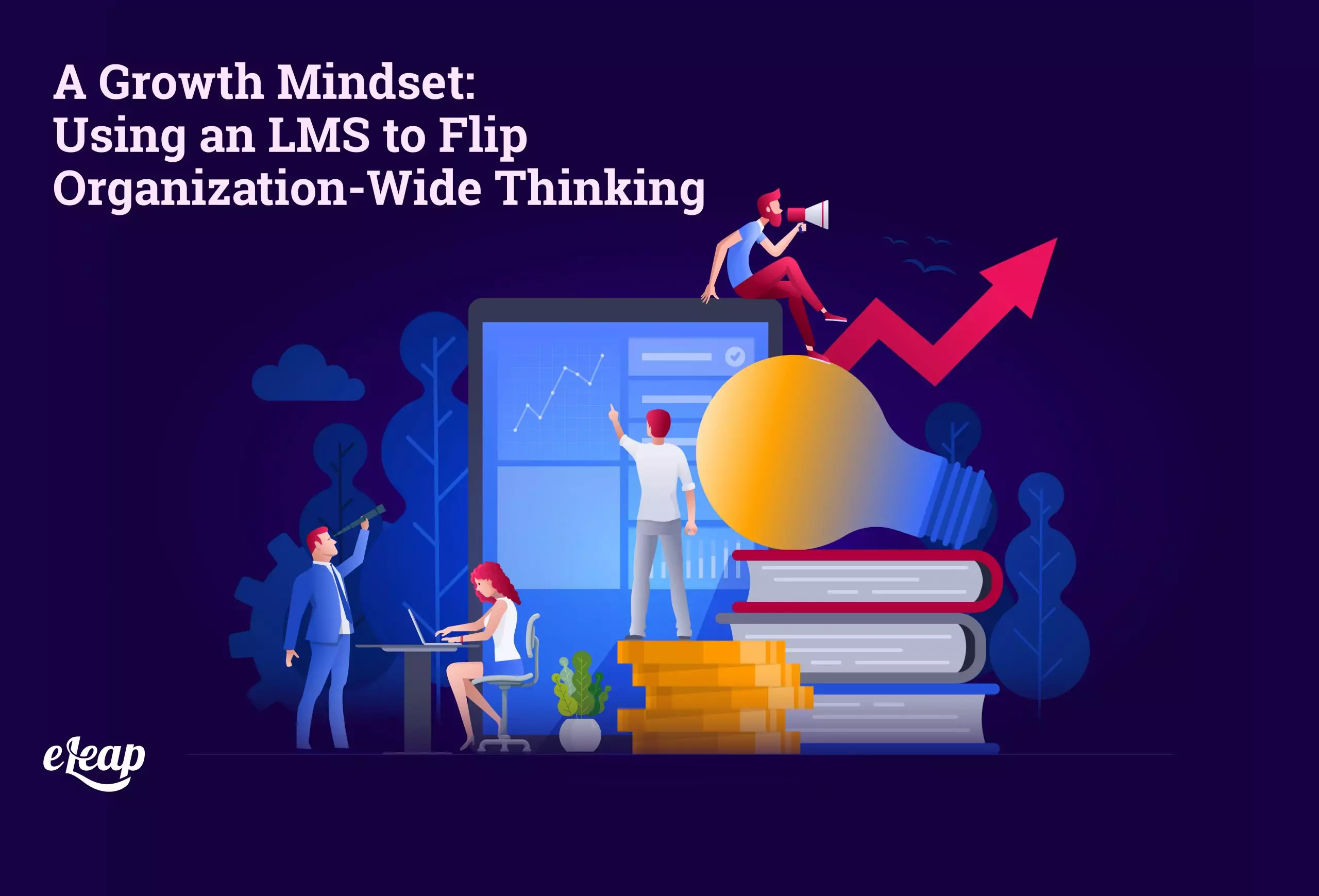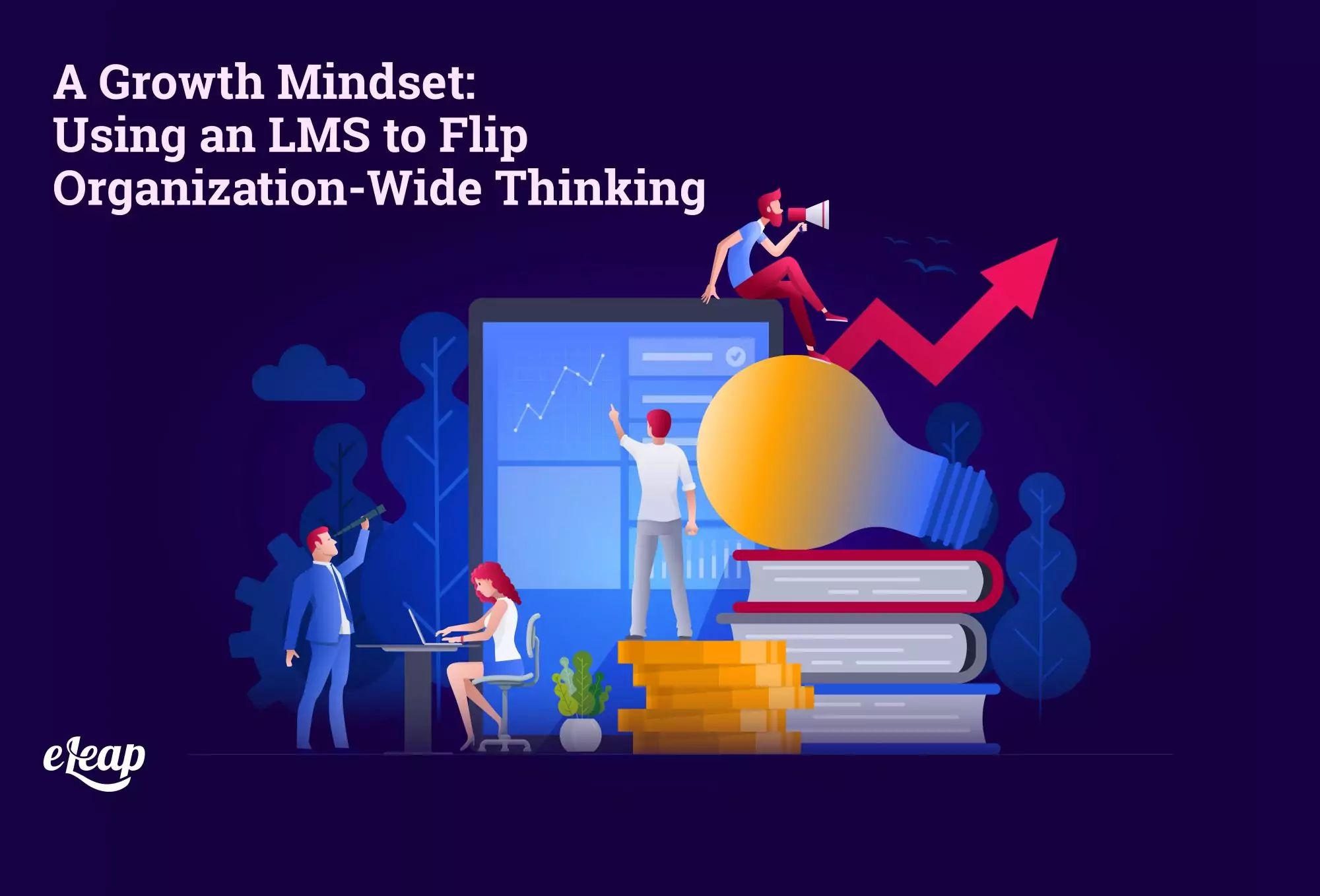A Growth Mindset: Using an LMS to Flip Organization-Wide Thinking

Our mindsets determine how we perceive the world. A mindset of scarcity will grasp at things as though they have value in and of themselves. Getting and holding becomes the goal of life, rather than actual living. A fixed mindset focuses on what currently is to the exclusion of all else – change is frightening and to be avoided, feedback has no value, and the achievements of others, as well as personal failure, imbue a deep sense of ambivalence and frustration.
In contrast, a growth mindset differs radically. Here, people value failure for the lessons it can teach. They understand that each failure is just one step on the path toward success. The successes of others inspire these people to greater successes in their own right, and feedback is not only valued but sought out and acted upon.
Obviously, cultivating a growth mindset is important, but it can also be challenging. The good news is that you have an asset that might have gone unnoticed – your LMS. How might a learning management system aid and augment your efforts? What does eLearning have to do with building a growth mindset into teams and even organization leaders?

The Three Legs of Mindset Change with Your LMS
With an LMS, it becomes possible to change mindsets at the foundational level. However, you must have the right learning management system in place. A modern system offers vital benefits and capabilities not found with older systems, including:
- Flexible Delivery – As opposed to location-based learning management systems, a modern, cloud-based LMS like eLeaP offers your employees the ability to learn when and where it works for them. In a situation like the pandemic, this is essential, not just to ensure that learning continues, but to increase engagement, provide a sense of normalcy, and offer your people a chance to grow and thrive.
- Customized Content – While a good LMS will give you access to an existing library of content, it should also allow you to create your own branded material. This is invaluable for creating a mindset of growth.
- Multiple Formats – Finally, a modern LMS must offer multiple delivery formats (text, games, video, multiple-choice paths, etc.) to ensure engagement and information retention with different types of learners.
Assuming your organization has chosen and implemented an LMS that meets those needs and requirements, it is time to turn our discussion to using it to change mindsets.
The Fear of Failure
The first leg of mindset change is helping your employees get over their fear of failure. In a fixed mindset, failure is a huge negative. It’s to be avoided at all costs, which stymies innovation, growth, and ideation.
With an LMS, you can use gamified learning to help employees understand that failure does not necessarily lead to negative outcomes. For instance, with a little planning, it is possible to create courses that teach employees to be resilient in the face of failure and to bounce back stronger than ever. It also becomes possible to create courses that show failure as part of the ladder of success, with each failure allows employees to learn something new.
The Value of Feedback
With a fixed mindset, feedback is not valued. It’s not sought after. When provided, it’s often ignored or made little of. With an LMS, it becomes possible to reverse that situation and provide constant feedback. This teaches learners not just to value that information, but to see its utility and even to seek it out.
For instance, when an employee learns a new skill through the LMS, congratulate them, not just through an automated “success” screen, but in person. Likewise, when they don’t succeed, provide actionable feedback about what they could have done to change the situation and achieve a better outcome. Note that this feedback should not be accusatory or in any way punitive. It should be actionable and supportive while acknowledging that an optimal outcome wasn’t achieved.
Tough Times Make Us Stronger
Employees who are never challenged will never grow. That’s part of the problem with a fixed mindset. Individuals don’t seek out challenges. In fact, they avoid them. The pain involved with growth and change, coupled with the fear of failure, mean that staying where they are is comfortable and safe.
With an LMS, you can challenge your learners in ways that help them overcome those inhibitions. Difficult, challenging content also helps ensure that learners retain as much information as possible. Think about it, what do you remember most, the easy times, or the more difficult experiences? For most of us, the tough times (and the lessons they taught us) stick around longer.
Putting It All Together
With the three legs of mindset change discussed above, it becomes possible to enact real change. However, for change to be effective and “sticky”, it must come from above, as well. It is critical that leadership buys into the importance of and need for a growth mindset.
This can be challenging in some organizations. You must take a long, hard look at your culture and identify whether it is more closely aligned with a scarcity mindset, a fixed mindset, or a growth mindset. For many organizations, scarcity and fixedness were the norms, but that is beginning to change. COVID-19 and all its challenges have accelerated that evolution, but this doesn’t mean that your culture will automatically change for the better. To help employees embrace a growth mindset, you’ll need to take definitive steps, have a learning and development strategy in place, and get leaders on board, too.
Why Choose eLeaP?
If you are on the market for a new LMS or are just realizing that your current learning management system doesn’t give you the abilities we discussed above, get in touch with us at eLeaP. Our platform was designed from the ground up to help foster cultural shifts, to allow custom content creation, to enable flexibility, and deliver content in the formats that work best for your learners.